
© Rosalie O’Connor. (Click image for larger version)
Boston Ballet
Coppélia
Boston, Boston Opera House
16 May 2013
www.bostonballet.org
Boston Ballet’s new production of Coppélia which opened May 16 at the Boston Opera House harkens back to 1870 when the ballet first premiered in Paris with a score by Delibes and choreography by Saint-Léon. An instant success, it became the most popular ballet at the Paris Opera for the rest of the century. Delibes’s score has survived to become an audience favorite, but none of Saint-Léon’s choreography remains. In fact, few ballets have been more altered over time than Coppélia. There are well over a dozen versions by now, including ones by Petipa, Sergeyev, Cecchetti, Ninette de Valois, Roland Petit, and most famous of all, Balanchine and Danilova. (She was the definitive Swanilda in the 30’s and 40’s.) It’s that latter version that’s now being performed in Boston.
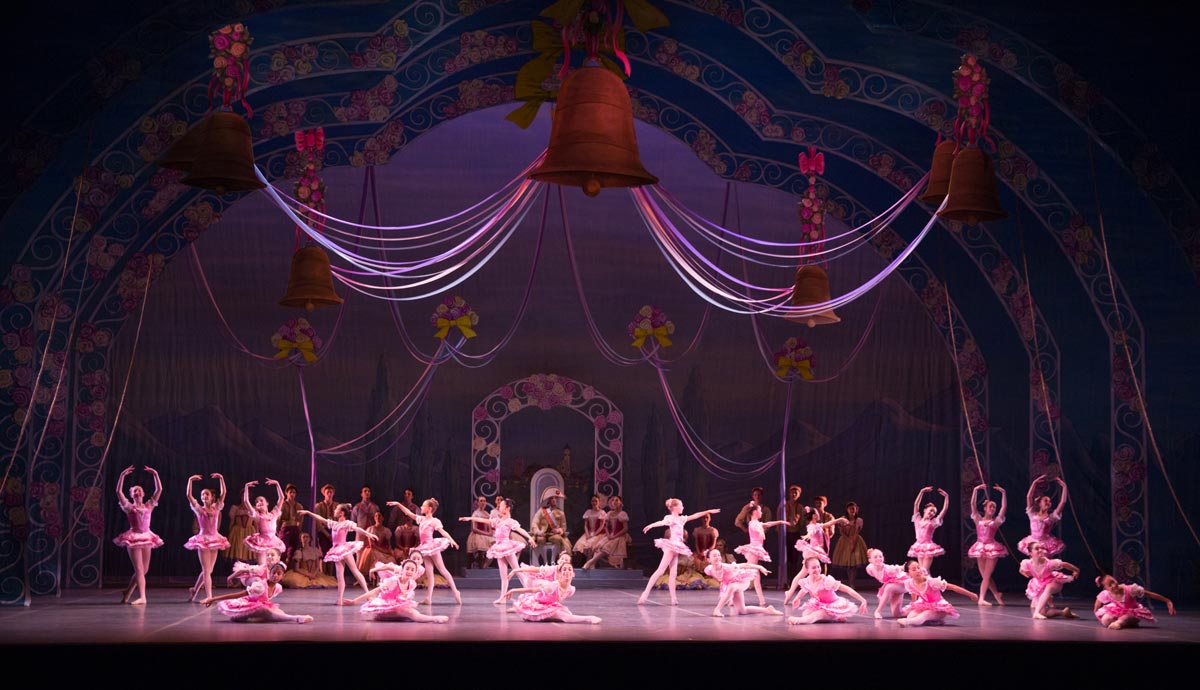
© Rosalie O’Connor. (Click image for larger version)
The ballet features shallow characters and a meager, incomprehensible plot. Somewhere in the Ukraine, a festival is under way to honor a new town bell. We soon learn that Franz (played by a girl in Paris until 1956) is divided in his affections between Swanilda, his local sweetheart, and Coppélia, the girl who sits reading on the balcony of toy-maker Dr. Copélius’s house. When Swanilda learns of Franz’s wandering eye, she does what any self-respecting Galician peasant girl would do under the circumstances: she becomes jealous and spiteful. She also leads eight girls, each with a sheaf of wheat, in an extended dance in which if a girl can hear seeds rattle in her sheaf, her love will be true – a fact understood by fewer than one out of a hundred members of the audience. Swanilda then sneaks into Dr Coppélius’s house with her girlfriends while he’s out to see what’s up with Coppélia. Soon thereafter, Coppélius and Franz also enter the house.

© Rosalie O’Connor. (Click image for larger version)
In act II, Swanilda and friends discover that Coppélia is in fact a mechanical doll shortly before Dr Coppélius enters and chases out everyone but Swanilda, who now hides in the alcove where the doctor keeps Coppélia. Franz climbs through the window, encounters Coppélius and professes his love for Coppélia. The doctor plies Franz with wine until he passes out and then attempts to transfer Franz’s vital force to his beloved doll. Swanilda, now impersonating Coppélia, jerks into life as if the toy-maker’s efforts are succeeding, and she leads the Doctor a merry chase until Franz finally regains consciousness. Franz now sees that Coppélia is a lifeless doll, renews his devotion to Swanilda who instantly forgives him, and they flee, leaving behind a devasted Coppelius cradling the bald, naked body of his adored creation.
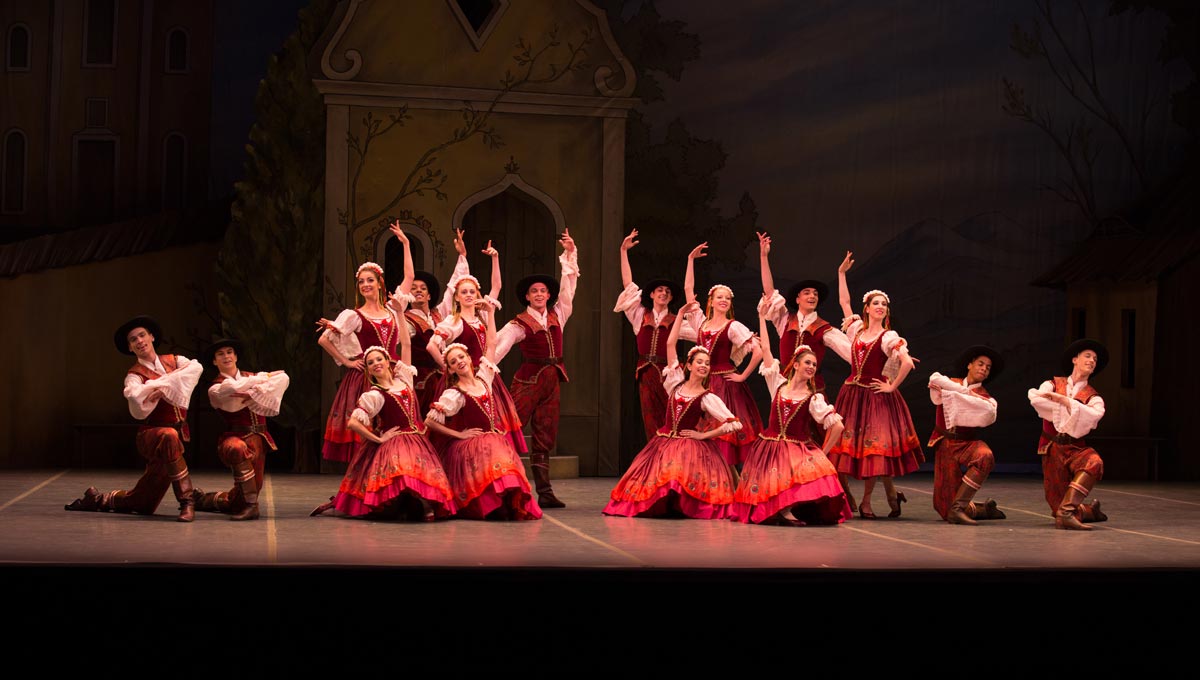
© Rosalie O’Connor. (Click image for larger version)
In Act III, the lovers are married and the new bell is inaugurated with a variety of entertainments which occur with little rhyme or reason. Women representing Dawn, Prayer, and Spinner (?) dance and there are a couple turns by a group called the Jesterettes (ugly name) and also a Waltz of the Golden Hours. Twenty-four little girls in pink tutus perform, but instead of marzipan filler Balanchine has created real choreography for them with some of his gorgeous diagonals. Concluding this nonsense, allegorical figures representing War and Discord appear with sixteen warriors and Amazons leaping about and brandishing spears. Where they come from and what they’re doing is anybody’s guess. But the third act does contain the pièce de résistance of the ballet: Ballanchine’s brilliant pas de deux for Swanilda and Franz, the acme of the evening and well worth waiting for.
So we have a minimal narrative, superficial characters and a good deal of bona fide nonsense. Why then the popularity of this ballet? The answer, I think, has to do with Delibe’s delightful score, with its happy marches and spirited gavottes and Belle Epoque élan. Many days later, his melodies are still playing in your head. More important still is Balanchine’s choreography and the role of Swanilda, so hugely demanding that it compels attention first to last. Swanilda is hardly ever off stage and her dancing runs the range of intricate classical movement plus the mechanical movements of an automated doll as well as folk dancing and the Spanish fandango and Scottish reel in Act II. The ballerina must also be accomplished at mime. And she must be such a good actress that she can walk the thin line between caricature and three-dimensionality with confidence and unerring instinct or the role becomes saccharine and ruins the ballet.
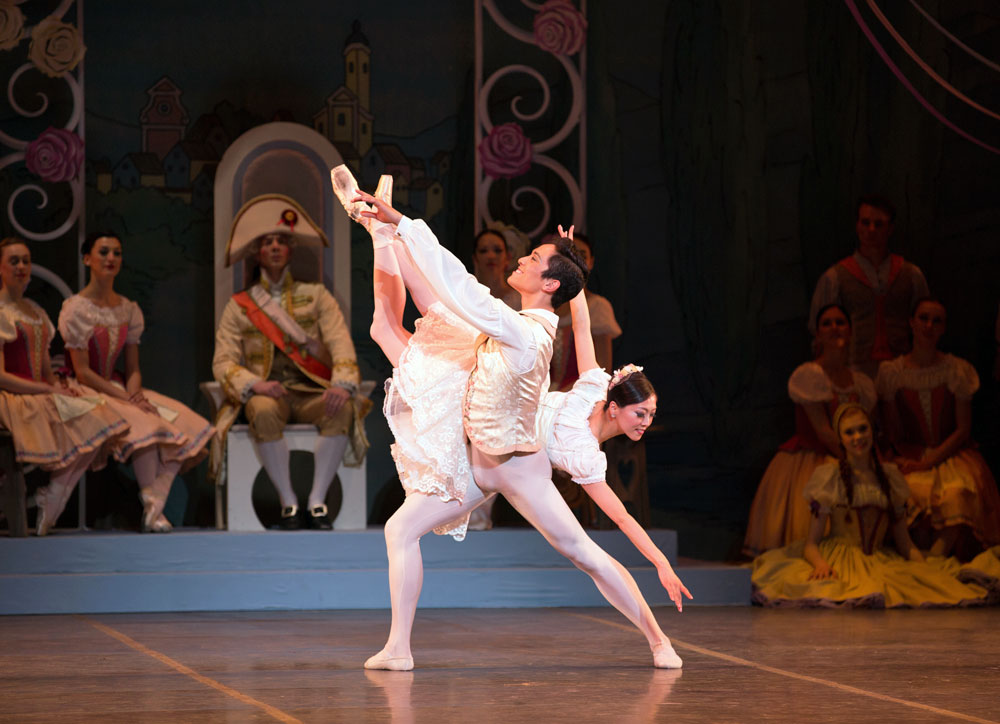
© Rosalie O’Connor. (Click image for larger version)
Boston audiences were very lucky in their first two Swanildas. Opening night, Misa Kuranaga was a vision of loveliness. It seemed she was floating as much as dancing the role, with all the lightness and carefree grace of a happy sylph. Jeffrey Cirio was excellent as her feckless lover, and when he was finally unleashed in Act III, he gave a sterling performance. (Franz has no real dancing until the end.) But it was at the second performance that you fully understood why Balanchine had bothered with the ballet. From the moment she emerged from her Carpathian cottage, Kathleen Breen Combes owned the role. Her dancing was flawless, her mime instantly legible, her line and musicality superb (the two essentials of all great dancing), and she saved the role from becoming that of a snippy twerp.
Boyko Dossev and Robert Kretz were commendable Dr Coppéliuses, Ashley Ellis and Lia Cirio performed ably as “Prayer,” and Seo Hye Han with her beautiful port de bras was thrilling as “Dawn.” Lia Cirio and Lasha Khozashvili brought the requisite energy and poker faces to the camp roles of War and Discord. Jonathan McPhee, as always, conducted the orchestra with great aplomb.
I’m glad that London audiences will soon get to see such exemplary dancers as Misa Kuranaga, Kathleen Breen Combes, and Jeffrey Cirio when the company tours there in July. I’m tempted to fly over to see them get the warm welcome they deserve.










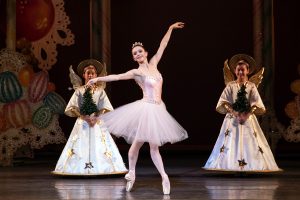



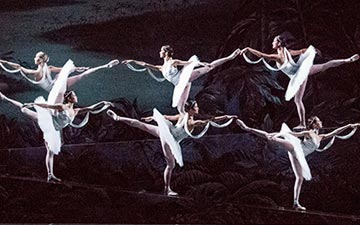


You must be logged in to post a comment.